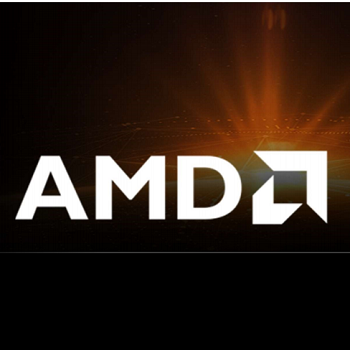Revenue for the quarter was up 99% from last year to $3.85 billion, GAAP profit was $710 million, up 352% from last year.
 AMD announced revenue of $3.85 billion for the second quarter of 2021, operating income of $924 million, net income of $710 million.
AMD announced revenue of $3.85 billion for the second quarter of 2021, operating income of $924 million, net income of $710 million.
“Our business performed exceptionally well in the second quarter as revenue and operating margin doubled and profitability more than tripled year-over-year,” said AMD president and CEO Lisa Su. “We are growing significantly faster than the market with strong demand across all of our businesses. We now expect our 2021 annual revenue to grow by approximately 60% year-over-year driven by strong execution and increased customer preference for our leadership products.”
Gross margin was 48%, up 4 points year-over-year and up 2 percentage points quarter-over-quarter. The quarter-over-quarter increase was driven by a greater mix of Ryzen, Radeon, and EPYC processor sales.

Operating income was $924 million compared to operating income of $173 million a year ago and $662 million in the prior quarter. Operating income improvements were primarily driven by higher revenue.
Net income was $710 million compared to net income of $157 million a year ago and $555 billion in the prior quarter. In May 2021, the company announced a $4 billion share repurchase program. In the second quarter, the company repurchased 3.2 million shares of common stock for $256 million.
Graphics Group
Computing and Graphics segment revenue was $2.25 billion, up 64.2% year-over-year and 7.1% quarter-over-quarter primarily driven by Ryzen processor and Radeon graphics product sales growth.

Client processor average selling price (ASP) grew year-over-year and quarter-over-quarter driven by a richer mix of Ryzen desktop and notebook processor sales.
GPU ASP was higher year-over-year and quarter-over-quarter driven by high-end Radeon graphics products.
Operating income was $526 million compared to $200 million a year ago and $486 million in the prior quarter.
Enterprise, Embedded, and Semi-Custom
Enterprise, Embedded, and Semi-Custom segment revenue was $1.6 billion, up 183% year-over-year and 19% quarter-over-quarter. The year-over-year increase was driven by higher semi-custom product sales and EPYC processor revenue. The quarter-over-quarter increase was driven by higher EPYC processor sales partially offset by lower semi-custom product sales.
Operating income was $398 million compared to $33 million a year ago and operating income of $277 million in the prior quarter. The year-over-year and quarter-over-quarter increases were primarily driven by higher revenue. All Other operating loss was $93 million compared to operating losses of $60 million a year ago and $100 million in the prior quarter.
Margin
The gross margin was 48%, flat year-over-year, and up 2 percentage points quarter-over-quarter. The quarter-over-quarter increase was driven by a greater mix of Ryzen, Radeon, and EPYC processor sales.

AMD announced that stockholders overwhelmingly approved its acquisition of Xilinx. The proposed acquisition remains on track to close by the end of the year. The company announced a $4 billion share repurchase program. AMD expects to fund repurchases through cash generated from operations.
The Top500 organization announced the world’s fastest supercomputers. The number of AMD-powered systems on the list grew by almost five times in the past year. AMD EPYC processors power half of the 58 new systems added to the June 2021 listing. These systems include Microsoft Azure supercomputers for UK Met Office, The Perlmutter supercomputer, and The Singapore National Supercomputing Centre supercomputer.
AMD announced Tesla is using AMD Ryzen Embedded Processors and AMD RDNA 2 based GPUs to power the infotainment system in the new Tesla Model S and Model X vehicles. 2nd Gen AMD EPYC processors are powering the new HPE Alletra 6000 storage solutions that enable upto 3× more performance compared to previous HPE Nimble storage all-flash arrays.
Valve announced Steam Deck, a handheld gaming console powered by a semi-custom AMD processor that can play the latest AAA PC games and access the entire Steam library on the go.
And the company launched FidelityFX Super Resolution (FSR), a state-of-the-art spatial upscaling algorithm feature designed to boost framerates and deliver high-quality, high-resolution gaming experiences. AMD also announced that more than 40 game developers pledged support for FSR, with more expected in the future.
Outlook
For the third quarter of 2021, AMD expects revenue to be approximately $4.1 billion, plus or minus $100 million, an increase of approximately 46% year-over-year and approximately 6% quarter-over-quarter. The year-over-year increase is expected to be driven by growth across all businesses. The quarter-over-quarter increase is expected to be primarily driven by growth in AMD’s data center and gaming businesses. AMD expects non-GAAP gross margin to be approximately 48% in the third quarter of 2021.
For the full year 2021, AMD now expects revenue growth of approximately 60%, up from prior guidance of approximately 50%, driven by strong growth across all businesses. AMD now expects non-GAAP gross margin to be approximately 48% for the full year 2021, up from prior guidance of approximately 47%.
What do we think?
AMD has done an extraordinary job in winning OEM design, large-scale systems, and can literally be found in every platform from smartphones to cars, to supercomputers, in addition to their traditional position in game consoles, desktop, and notebook PCs, and even Chromebooks.
The company’s fantastic growth and return to profitability have been a result of leading technology. AMD was always a technology company, sometimes the tech was better than the others. AMD is not an MBA-driven company that makes decisions and plans on how it will affect the share price. That’s the main reason in my opinion that the company is doing so well—it’s a technology company.






